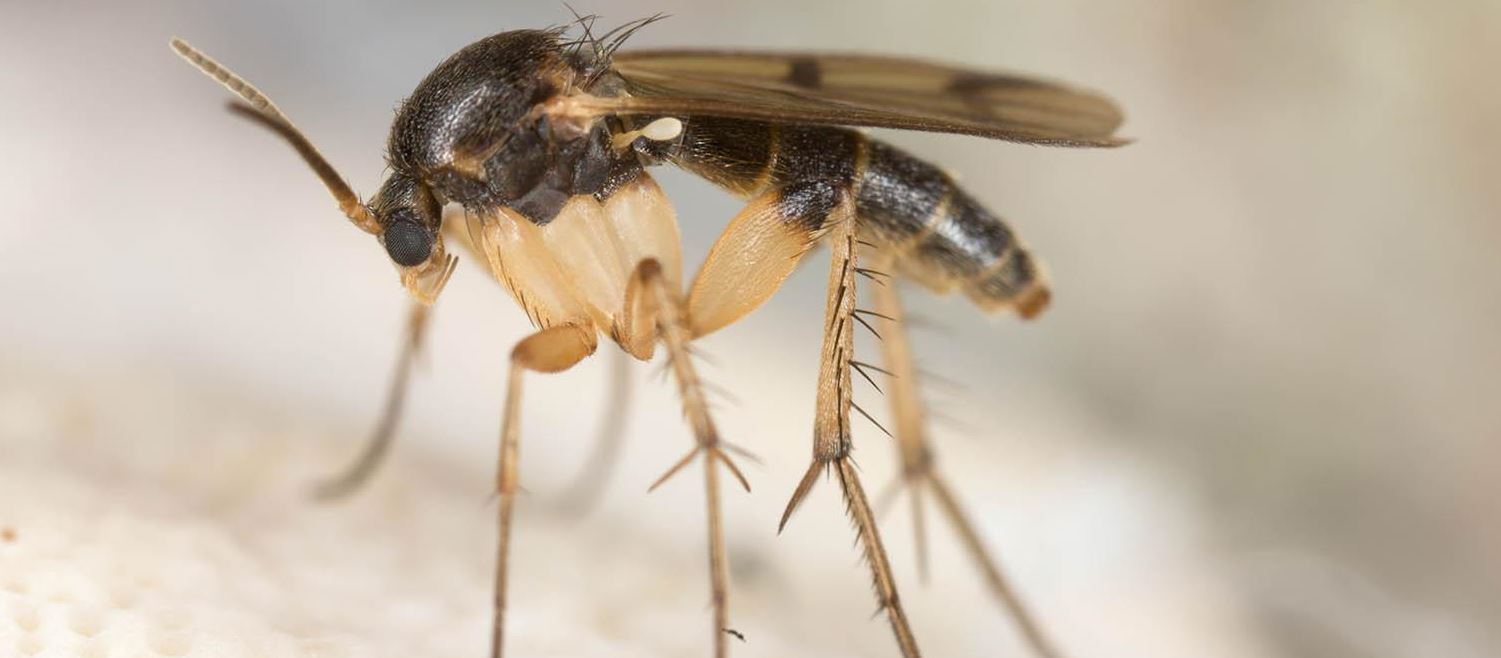What Do Gnats Eat?
Despite what you may think, the preferred food of gnats isn’t necessarily your precious blood. Like us humans, different gnats have individual predilections towards particular sources of nourishment.
The younger gnats also often consume dissimilar staples to those of their parents. Let’s expose the clandestine world of the gnat’s diet.
Gnats eat:
- Rotting food
- Fungi
- Plant stems
- Invertebrates
- Bodily fluids
The Gnat’s Menu
Geographical location, species, and age of the gnat determine its food habits. Here are the most common family groups and what’s on the menu.
Eye Gnat — Liohippelates
Eye Gnat Larvae Diet
They live in freshly disturbed soil, particularly high in organic matter — such as hay and grass — which determines their diet. Typically, their repasts will include rotting plants, fungi and the eggs of other insects.
Eye Gnat Adult Diet
While eye gnats don’t bite, their favorite foods are your bodily fluids. They voraciously consume secretions from your ears, nose, mouth and open wounds.
They’re also not that picky. The eye gnat is as likely to munch away on your discharges as those of your children and pets. This is concerning as they can spread diseases such as conjunctivitis in humans and mastitis in animals.
Fungus Gnat — Sciaridae
Fungus Gnat Larvae Diet
The larvae of the fungus gnat live around the bases of plants in the top inch of soil. As their name implies, they primarily eat small fungi growing in moist earth. These little wrigglers will also chomp through plant roots and stems, being a particular danger to potatoes, tulips and begonias.
Fungus Gnat Adult Diet
As the fungus gnat matures and becomes an adult, its preferences change. While it may intermittently feed on rotting flora matter, it won’t harm plants.
Its ideal takeaway is flower nectar. This symbiotic relationship with plants means the adult fungus gnat obtains its nourishment while also promoting pollination.
Buffalo Gnat — Simuliidae
Buffalo Gnat Larvae Diet
The female adult buffalo gnat lays her eggs in running water. When the larvae hatch, they attach themselves with hooks and silk threads to submerged plants and rocks.
While anchored, the ingenious larvae face upstream. With sticky and fan-like mouthparts, they feed on bacteria and microorganisms in the water.
Buffalo Gnat Adult Diet
Both the male and female adults feed on nectar. While the male gnat will only consume this sweet plant liquid in its lifetime, the lady gnat also has more sinister tastes.
To produce eggs, the females must gorge on blood. With their scissors-like teeth, they can cause painful bites on both humans and animals. This results in itching, swelling and inflammation. In severe infestation cases, buffalo gnats can kill pets and livestock.
Sewer Gnats — Psychodidae
Sewer Gnat Larvae Diet
If you’ve ever seen minute, moth-like flies fluttering around drains and sinks, these are sewer gnats — sometimes known as drain flies.
Their larvae reside in decaying organic slime, or biofilm, that builds up through food matter being flushed down plugholes. Research shows that this greasy layer can contain over 200 species of microscopic worms, protozoa, algae and bacteria — an absolute smorgasbord of delicacies for the larvae to chew through.
If there are no drains, sewer gnats may lay their eggs in exceedingly wet soil. The larvae burrow down into the earth, searching for decaying organic matter. To breathe, they then resurface for oxygen and then drop down into the ground again for a second helping.
Sewer Gnat Adult Diet
The adult sewer gnats have a similar diet to their younglings, hanging around shower cubicles and kitchen sinks waiting for service. Due to their bigger size, they’re more likely to consume larger particles stuck in filters.
If the drains and pipes lack any source of nourishment, they may seek alternative supplies from garbage bins, sliding door runners and lifting tiles.
Biting Gnats — Ceratopogonidae
Biting Gnats Larvae Diet
As youngsters, the larvae of the biting gnat are typically vegetarian. Spending their first few days of life in moist soil, they consume fungi, algae, soil detritus and rotting plants.
Some species lay their eggs in swamps and marshlands. In these circumstances, their diet may extend to small invertebrates, in addition to decomposing organic matter.
Biting Gnats Adult Diet
After the larvae pupate and become adults, the female biting gnat develops a taste for blood. Her favorite times to enjoy a meal are at dawn and dusk, where she’ll feed upon the blood of humans and animals. As soon as she’s finished her snacks, she’ll then proceed to mate with a meal for dessert.
The male is a more pleasant creature, who remains vegetarian and will only consume nectar throughout his adult life.
Conclusion
There’s no set diet for the broad familial spectrum of gnats. Depending on their age, species and location, their varied diet includes rotting food, decomposing plants and human blood.
Knowing their food choices can be a preventative measure to keep gnats at bay. Ensuring there are no free meals for them around your home and garden means they’ll venture elsewhere.

